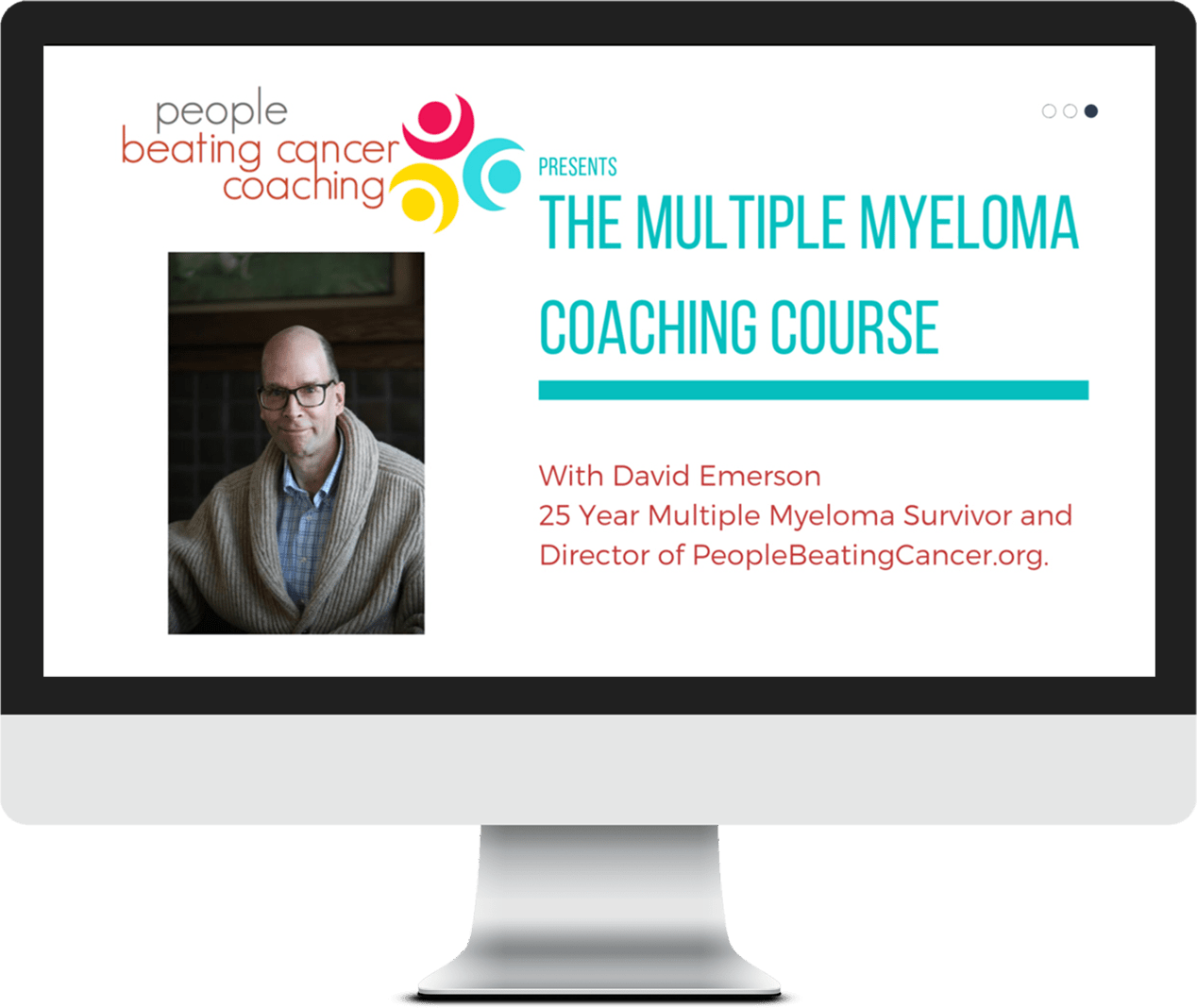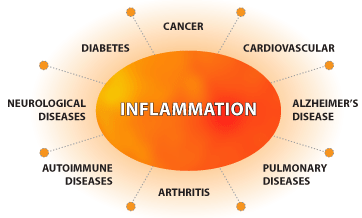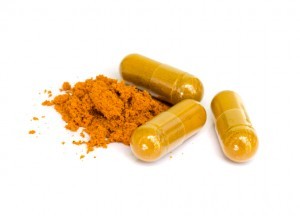
Recently Diagnosed or Relapsed? Stop Looking For a Miracle Cure, and Use Evidence-Based Therapies To Enhance Your Treatment and Prolong Your Remission
Multiple Myeloma an incurable disease, but I have spent the last 25 years in remission using a blend of conventional oncology and evidence-based nutrition, supplementation, and lifestyle therapies from peer-reviewed studies that your oncologist probably hasn't told you about.
Click the orange button to the right to learn more about what you can start doing today.
- You are here:
- Home »
- Blog »
- non-conventional therapies »
- Eliminate Inflammation, Eliminate Multiple Myeloma
Eliminate Inflammation, Eliminate Multiple Myeloma

Evidence-Based, Non-Toxic, Non-Conventional Multiple Myeloma Therapies Will Eliminate Inflammation, eliminate multiple myeloma?
Chemotherapy and radiation put me into partial remission for less than a year. My conventional therapies didn’t eliminate multiple myeloma but they did increase inflammation (INFL.). Most long-term MM survivors know this. Chemotherapy causes inflammation. And inflammation inflames multiple myeloma.
But once I achieved complete remission aka MM-free status, I changed my lifestyle, one thing at a time over a period of years.
The net result of changes in my diet, developing a habit of anti-MM nutrition, antioxidant supplementation, daily moderate exercise, more sleep, less stress.
All these simple lifestyle therapies kept me MM-free. And I remain MM-free despite my risk of MM relapse and a therapy-related secondary cancer.
Chemoradation increases INFL.
- Losing weight,
- moderate regular exercise,
- nutritional supplementation such as curcumin, resveratrol, epigallocatechin gallate, genistein, lycopene, and anthocyanins
are evidence-based, non-toxic, non-conventional cancer therapies.
The studies linked and excerpted below cite INFL. as a major cause of chronic disease and cancer. In a way I am a long-term test case. I will continue my evidence-based, non-toxic, non-conventional lifestyle and let’s see if my cancer returns of if I develop any chronic diseases as I age.
For more information about simple, inexpensive therapies to reduce your body’s INFL scroll down the page, post a question or comment and I will reply ASAP.
thank you,
David Emerson
- Long-term MM survivor
- MM Coach
- Director PeopleBeatingCancer
Recommended Reading:
- Why Cancer Patients Can’t Trust Conventional Cancer Research
- Organic Diet-Fewer Cancer Dx’s, Longer Cancer Survival
- Cancer Coaching- Nutrition = anti-inflammation, angiogenesis, antioxidation
Lipids, Inflammation Linked to Multiple Myeloma Origins
“Inflammation and chronic stimulation of the immune system by lipids may trigger multiple myeloma in approximately one-third of all cases, according to early research from Yale Cancer Center published in The New England Journal of Medicine.1..”
Why Cancer and Inflammation?
“Inflammation has long been associated with the development of cancer. This review will discuss the reflexive relationship between cancer and inflammation with particular focus on how considering the role of inflammation in physiologic processes such as the maintenance of tissue homeostasis and repair may provide a logical framework for understanding the connection between the inflammatory response and cancer…”
Pre-existing inflammation may promote the spread of cancer
“There is mounting evidence that chronic inflammation is linked to increased risk of tumor development. A new study is helping to shed light on the important link between inflammation and cancer, and how pre-existing inflammation may aid in the metastatic process…
Important findings from our research show how pre-existing inflammation may be one of the factors that accelerates metastasis to the inflamed site…”
Tocotrienols: inflammation and cancer.
“The distinct characteristics of cancer cells to proliferate, metastasize, evade apoptotic signals, and develop chemoresistance have been linked to the inflammatory response. Due to the involvement of multiple genes and various pathways, current drugs that target single genes have not been effective in providing a therapeutic cure. On the other hand, natural products target multiple genes and therefore have better success compared to drugs. Tocotrienols, the potent isoforms of vitamin E, are such a natural product…”
Targeting the inflammatory pathways to enhance chemotherapy of cancer.
The Most BioAvailable Curcumin Forumulas
“Based on a review of these studies, it is evident that better bioavailability of formulated curcumin (CU) products is mostly attributed to improved solubility, stability, and possibly low first-pass metabolism”
A search of the Pubmed database for the word curcumin yields 601 studies spaning health topics from multiple myeloma and colorectal cancer, to chemotherapies that synergizes with CU, to Alzheimer’s Disease, arthritis and more. Based on years of reading studies and personal accounts, I think it is safe to say that CU supplementation is safe and relatively inexpensive.
I have read about myeloma patients taking daily doses of CU from 400 milligrams to 8 grams (1000 milligrams = 1 gram). By almost any measure, CU is a safe, inexpensive wonder drug.
The only challenge is that CU is famously difficult to absorb in the body. In other words, a person has to mix curcumin with some sort of fat (coconut oil, chocolate, etc.) or take a brand of curcumin capsule that is already formulated to be more “bioavailable” in order to derive the full benefit of CU.
The study linked and exerpted below reviews different formulations of CU. The study itself lists the three most bioavailable formulation/brand of CU and I’ve added an excerpt from a further review from Consumerlab.com that lists four additional bioavailable brands of CU.
Recommended Reading:
- CU versus Turmeric as Cancer Therapy-What’s the Difference?
- CU Suppresses Colon Cancer, Enhances Chemotherapy
- Prostate Cancer: CU Curbs Prostate Cancer Metastases, Study Shows
- CU vs. cancer: The scientific evidence continues to pile up
Curcumin
“CU is a bright yellow chemical produced by some plants. It is the principal curcuminoid of turmeric (Curcuma longa), a member of the ginger family, Zingiberaceae. It is sold as an herbal supplement, cosmetics ingredient, food flavoring, and food coloring.[1]“
Bioavailable curcumin formulations: A review of pharmacokinetic studies in healthy volunteers.
“Curcumin is a widely studied natural compound which has shown tremendous in vitro therapeutic potential. Despite that, the clinical efficacy of the native CU is weak due to its low bioavailability and high metabolism in the gastrointestinal tract. During the last decade, researchers have come up with different formulations with a focus on improving the bioavailability of curcumin. As a result, a significant number of bioavailable curcumin-based formulations were introduced with the varying range of enhanced bioavailability.
The purpose of this review is to collate the published clinical studies of CU products with improved bioavailability over conventional (unformulated) CU. Based on the literature search, 11 curcumin formulations with available human bioavailability and pharmacokinetics data were included in this review. Further, the data on clinical study design, analytical method, pharmacokinetic parameters and other relevant details of each formulation were extracted.
Based on a review of these studies, it is evident that better bioavailability of formulated curcumin products is mostly attributed to improved solubility, stability, and possibly low first-pass metabolism. The review hopes to provide a quick reference guide for anyone looking information on these bioavailable curcumin formulations.
Based on the published reports,
exhibited over 100-fold higher bioavailability relative to reference unformulated CU. Suggested mechanisms accounting for improved bioavailability of the formulations and details on the bioanalysis methods are also discussed.”
According to Consumerlab.com:
“Novasol has the highest bioavailability (185 x compared to unforumulated CU), followed by Curcuwin (136 x), Longvida (100 x), Meriva (48 x), BCM-95 (27 x), Curcumin C3 Complex + Bioperene (20 x), and then Theracumin (16 x).”



